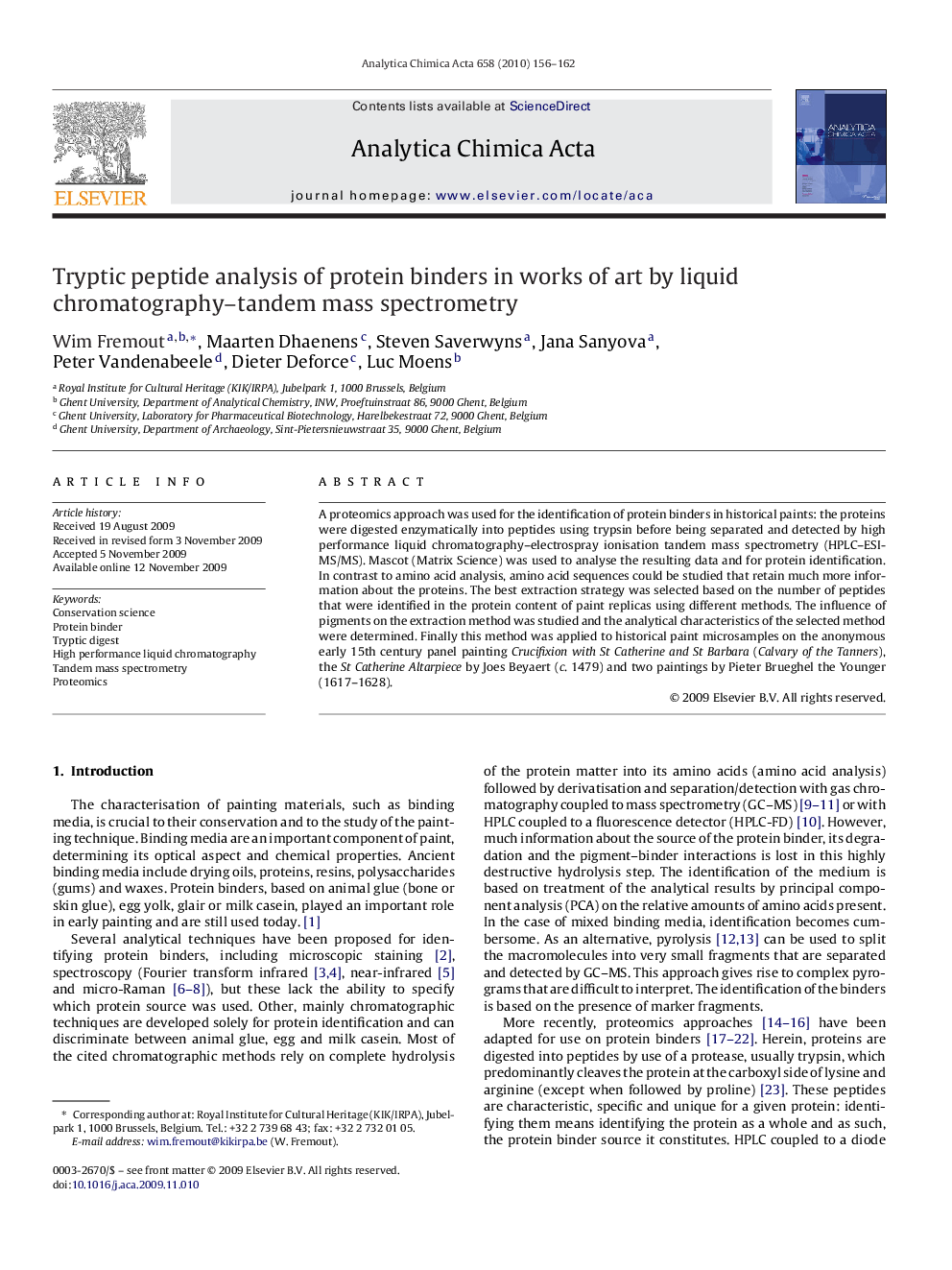| Article ID | Journal | Published Year | Pages | File Type |
|---|---|---|---|---|
| 1167614 | Analytica Chimica Acta | 2010 | 7 Pages |
A proteomics approach was used for the identification of protein binders in historical paints: the proteins were digested enzymatically into peptides using trypsin before being separated and detected by high performance liquid chromatography–electrospray ionisation tandem mass spectrometry (HPLC–ESI-MS/MS). Mascot (Matrix Science) was used to analyse the resulting data and for protein identification. In contrast to amino acid analysis, amino acid sequences could be studied that retain much more information about the proteins. The best extraction strategy was selected based on the number of peptides that were identified in the protein content of paint replicas using different methods. The influence of pigments on the extraction method was studied and the analytical characteristics of the selected method were determined. Finally this method was applied to historical paint microsamples on the anonymous early 15th century panel painting Crucifixion with St Catherine and St Barbara (Calvary of the Tanners), the St Catherine Altarpiece by Joes Beyaert (c. 1479) and two paintings by Pieter Brueghel the Younger (1617–1628).
